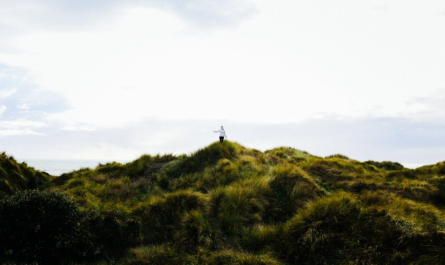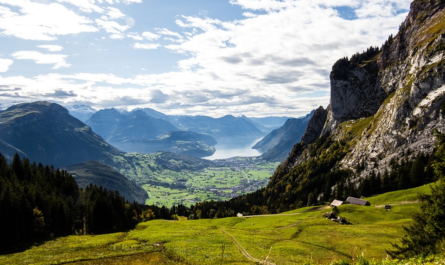The ever-changing weather conditions from clear blue skies to dramatic cloud formations and misty mornings—allow for a variety of moods and compositions, ensuring every visit offers a unique photographic experience. One of the highlights of photographing Mount Rigi is capturing the mesmerizing sunrise and sunset vistas. At dawn, the first light gently bathes the landscape in golden hues, creating a dreamy and ethereal atmosphere, while at dusk, the sky transforms into a canvas of warm oranges, deep purples, and soft pinks, providing the perfect backdrop for breathtaking shots. Additionally, during winter, Mount Rigi turns into a snowy wonderland, where frost-covered trees, icy pathways, and soft, diffused light create an enchanting scene.
Whether you’re a beginner or a seasoned photographer, Mount Rigi offers endless opportunities to refine your skills and experiment with different photography techniques. By using composition principles such as the rule of thirds, leading lines, and natural framing, you can enhance your images and bring depth to your shots. The diverse terrain, from rugged peaks to tranquil lakeshores, ensures there is always something new to capture. With careful planning, the right camera settings, and an eye for detail, you can create stunning landscape photos that truly capture the beauty and essence of Mount Rigi.
1. Choose the Right Time of Day
Timing is crucial for landscape photography, and Mount Rigi offers spectacular views throughout the day. However, the best times for capturing stunning shots are during golden hour (shortly after sunrise and before sunset) and blue hour (just before sunrise and after sunset).
- Sunrise: The early morning light creates a soft, warm glow over the Swiss Alps, making for a dreamy and atmospheric shot.
- Sunset: The setting sun bathes the mountains and Lake Lucerne in warm hues, perfect for capturing vibrant landscapes.
2. Select the Best Spots for Photography
Mount Rigi has several vantage points that offer different photographic perspectives:
- Rigi Kulm: The highest point on Mount Rigi at 1,798 meters offers 360-degree panoramic views of the Swiss Alps, Lake Lucerne, and surrounding valleys.
- Rigi Kaltbad: A scenic area with stunning views and charming Swiss chalets, perfect for capturing the natural beauty and local culture.
- Rigi Scheidegg: Ideal for capturing rolling green hills, deep valleys, and beautiful sunrise vistas.
3. Use the Right Camera Gear
To capture high-quality landscape photos, consider using:
- A DSLR or Mirrorless Camera: Offers better control over settings like exposure and focus.
- Wide-Angle Lens (10-24mm): Helps capture expansive landscapes and the vastness of Mount Rigi’s scenery.
- Tripod: Essential for stable shots, especially during low-light conditions like sunrise or sunset.
- Polarizing Filter: Reduces reflections and enhances color contrast, making the sky and water appear more vibrant.
4. Master Your Camera Settings
To achieve stunning landscape shots, adjust your camera settings accordingly:
- Aperture (f/8 – f/16): Ensures sharp details in both foreground and background.
- ISO (100-200): Keeps image quality high while reducing noise.
- Shutter Speed: Use a slow shutter speed (1/15s or longer) for smooth water or clouds, and a fast shutter speed (1/250s or higher) to capture crisp details.
- Focus Mode: Use manual focus or focus stacking to ensure every element in the landscape is sharp.
5. Pay Attention to Composition
Composition plays a crucial role in landscape photography. Use these techniques to enhance your shots:
- Rule of Thirds: Place key elements along grid lines for a balanced composition.
- Leading Lines: Use roads, fences, or natural lines to guide the viewer’s eye into the image.
- Foreground Interest: Incorporate rocks, flowers, or trees to add depth and scale to your photo.
- Framing: Use natural elements like tree branches or archways to frame your shot.
Mastering composition techniques can significantly enhance the visual appeal and storytelling of a photograph. The Rule of Thirds is a fundamental principle that involves placing key elements along the imaginary grid lines that divide the frame into thirds, creating a well-balanced and naturally engaging composition. This prevents subjects from being centered awkwardly and adds a sense of harmony to the image. Leading lines, such as roads, fences, rivers, or pathways, are powerful tools that guide the viewer’s eye toward the main subject, adding a sense of movement and depth. Incorporating foreground interest, like rocks, flowers, or trees, not only creates a sense of scale but also adds layers to the image, making it feel more immersive and three-dimensional. Lastly, framing with natural elements like tree branches, archways, or windows helps draw attention to the subject while adding context and depth. Thoughtful composition using these techniques can turn an ordinary shot into a visually striking and well-structured masterpiece.
6. Take Advantage of Weather Conditions
Weather can dramatically impact your landscape photography. Mount Rigi offers diverse conditions that can be used creatively:
- Fog and Mist: Adds a mystical, dreamy effect to your photos.
- Clear Skies: Perfect for capturing vibrant colors and long-distance views.
- Cloudy Skies: Creates dramatic contrast and mood in your shots.
- Snowy Landscapes: During winter, Mount Rigi transforms into a wonderland, ideal for breathtaking winter scenes.
Different weather conditions can dramatically transform the mood and impact of a photograph, each offering unique visual elements. Fog and mist add a mystical, dreamy effect, softening details and creating an ethereal atmosphere that enhances depth and mystery. On the other hand, clear skies provide the perfect backdrop for vibrant colors, sharp contrasts, and long-distance views, making landscapes appear crisp and vivid. Cloudy skies introduce drama and mood, adding depth and texture to the scene with their dynamic formations and shifting light. During winter, snowy landscapes turn locations like Mount Rigi into a breathtaking wonderland, where snow-covered trees, frozen lakes, and soft, diffused light create a serene and magical setting, ideal for capturing stunning seasonal photographs.
7. Post-Processing for the Perfect Shot
Editing enhances your landscape photos by adjusting color, contrast, and sharpness. Use software like Adobe Lightroom or Photoshop to:
- Enhance Colors: Boost vibrancy without making the image look unnatural.
- Adjust Exposure: Correct overexposed or underexposed areas.
- Sharpen Details: Improve clarity and make textures stand out.
- Remove Distractions: Clone out unwanted objects for a cleaner composition.
Enhancing an image involves a combination of adjustments to achieve a visually appealing and balanced composition. By boosting vibrancy, colors can appear richer and more dynamic without looking unnatural or oversaturated. Correcting exposure helps bring out details in both highlights and shadows, ensuring that no part of the image is too bright or too dark. Sharpening details enhances clarity, making textures stand out and giving the image a crisp, refined look. Additionally, removing distractions by cloning out unwanted objects creates a cleaner, more focused composition, allowing the main subject to stand out without unnecessary elements competing for attention.
8. Respect Nature and Local Guidelines
While capturing stunning photos, be mindful of the environment. Stick to marked trails, avoid disturbing wildlife, and follow any local regulations to preserve the beauty of Mount Rigi for future visitors.
Mount Rigi offers an unparalleled experience for landscape photographers. By choosing the right time, using the best gear, mastering camera settings, and composing your shots thoughtfully, you can capture breathtaking images that showcase the beauty of Switzerland’s “Queen of the Mountains.” Happy shooting!



